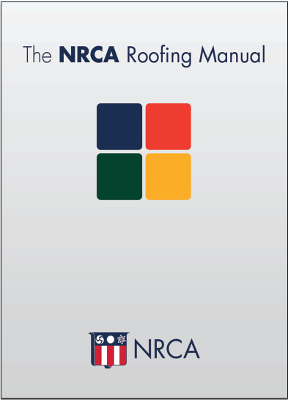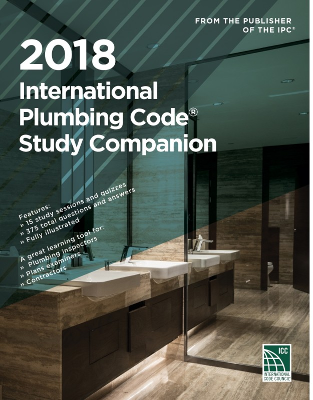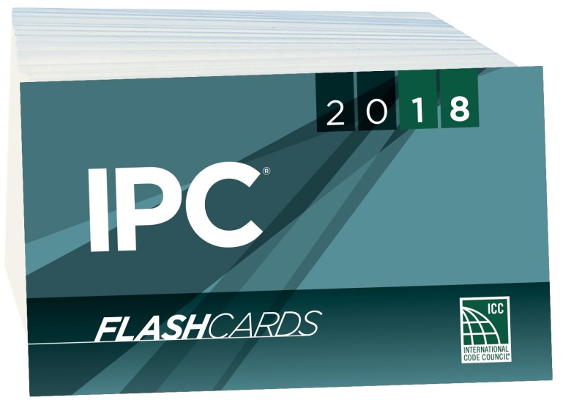Table of Contents
- Introduction
- Concrete and Reinforced Concrete
- Advantages of Reinforced Concrete as a Structural Material
- Disadvantages of Reinforced Concrete as a structural Material
- Historical Background
- Comparison of Reinforced Concrete and Structural Steel for Buildings and Bridges
- Compatibility of Concrete and Steel
- Design Codes
- SI Units and Shaded Areas
- Types of Portland Cement
- Admixtures
- Properties of Concrete
- Aggregate
- High-Strength Concretes
- Fiber-Reinforced Concretes
- Concrete Durability
- Reinforced Steel
- Grades of Reinforcing Steel
- SI Bar Sizes and Material Strengths
- Corrosive Environments
- Identifying Marks on Reinforcing Bars
- Introduction to Loads
- Dead Loads
- Live Loads
- Environmental Loads
- Selection of Design Loads
- Calculation Accuracy
- Impact of Computers on Reinforced Concrete Design
- Problems
- Flexural Analysis of Beams
- Introduction
- Cracking Moment
- Elastic Stresses – Concrete Cracked
- Ultimate or Nominal Flexural Moments
- SI Examples
- Computer Examples
- Problems
- Strength Analysis of Beams According to ACI Code
- Design Methods
- Advantages of Strength Design
- Structural Safety
- Derivation of Beam Expressions
- Strains in Flexural Members
- Balanced Sections, Tension-Controlled Sections, and Compression-Controlled or Brittle Sections
- Strength Reduction or Factors
- Minimum Percentage of Steel
- Balanced Steel Percentage
- Example Problems
- Computer Examples
- Problems
- Design of Rectangular Beams and One-Way Slabs
- Load Factors
- Design of Rectangular Beams
- Beam Design Examples
- Miscellaneous Beam Consideration
- Determining Steel Area When Beam Dimensions are Predetermined
- Bundled Bars
- One-Way Slabs
- Cantilever Beams and Continuous Beams
- SI Example
- Computer Example
- Problems
- Analysis and Design of T Beams and Doubly Reinforced Beams
- T Beams
- Analysis of T Beams
- Another Method for Analyzing T Beams
- Design of T Beams
- Design of T Beams for Negative Moments
- L-Shaped Beams
- Compression Steel
- Design of Doubly Reinforced Beams
- SI Examples
- Computer Examples
- Problems
- Serviceability
- Introduction
- Importance of Deflections
- Control of Deflections
- Calculation of Deflections
- Effective Moments of Inertia
- Long-Term Deflections
- Simple-Beam Deflections
- Continuous -Beam Deflections
- Types of Cracks
- Control of Flexural Cracks
- ACI Code Provisions Concerning Cracks
- Miscellaneous Cracks
- SI Examples
- Computer Examples
- Problems
- Bond, Development Lengths, and Splices
- Cutting Off or Bending Bars
- Bond Stresses
- Development Lengths for Tension Reinforcing
- Development Lengths for Bundled Bars
- Hooks
- Development Lengths for Welded Wire Fabric in Tension
- Development Lengths for Compression Bars
- Critical Sections for Development Lengths
- Effect of Combined Shear and Moment on Development Lengths
- Effect of Shape of Moment Diagram on Development Lengths
- Cutting Off or Bending Bars (Continued)
- Bar Splices in Flexural Members
- Tension Splices
- Compression Splices
- Headed and Mechanically Anchored Bars
- SI Examples
- Computer Example
- Problems
- Shear and Diagonal Tension
- Introduction
- Shear Stresses in Concrete Beams
- Lightweight Concrete
- Shear Strength of Concrete
- Shear Cracking of Reinforced Concrete Beams
- Web Reinforcement
- Behavior of Beams with Web Reinforcement
- Design for Shear
- ACI Code Requirements
- Shear Design Example Problems
- Economical Spacing of Stirrups
- Shear Friction and Corbels
- Shear Strength of Members Subjected to Axial Forces
- Shear Design Provisions for Deep Beams
- Introductory Comments on Torsion
- SI Example
- 17 Computer Example
- Problems
- Introduction to Columns
- General
- Types of Columns
- Axial Load Capacity of Columns
- Failure of Tied and Spiral Columns
- Code Requirements for Cast-in-Place Columns
- Safety Provisions for Columns
- Design Formulas
- Comments on Economical Column Design
- Design of Axially Loaded Columns
- SI Example
- 11 Computer Example
- Problems
- Design of Short Columns Subject to Axial Load and Bending
- Axial Load and Bending
- The Plastic Centroid
- Development of Interaction Diagrams
- Use of Interaction Diagrams
- Code Modifications of Column Interaction Diagrams
- Design and Analysis of Eccentrically Loaded Columns Using Interaction Diagrams
- Shear Columns
- Biaxial Bending
- Design of Biaxially Loaded Columns
- Continued Discussion of Capacity Reduction Factors
- Computer Example
- Problems
- Slender Columns
- Introduction
- Nonsway and Sway Frames
- Slenderness Effects
- Determining k Factors with Alignment Charts
- Determining k Factors with Equations
- First-Order Analyses Using Special Member Properties
- Slender Columns in Nonsway and Sway Frames
- ACI Code Treatments of Slenderness Effects
- Magnification of Column Moments in Nonsway Frames
- Magnification of Columns Moments in Sway Frames
- Analysis of Sway Frames
- Computer Examples
- Problems
- Footings
- Introduction
- Types of Footings
- Actual Soil Pressures
- Allowable Soil Pressures
- Design of Wall Footings
- Design of Square Isolated Footings
- Footings Supporting Round or Regular Polygon-Shaped Columns
- Load Transfer from Columns to Footings
- Rectangular Isolated Footings
- Combined Footings
- Footing Design for Equal Settlements
- Footings Subjected to Axial Loads and Moments
- Transfer of Horizontal Forces
- Plain Concrete Footings
- SI Example
- Computer Examples
- Problems
- Retaining Walls
- Introduction
- Types of Retaining Walls
- Drainage
- Failures of Retaining Walls
- Lateral Pressure on Retaining Walls
- Footing Soil Pressures
- Design of Semi gravity Retaining Walls
- Effect of Surcharge
- Estimating the Sizes of Cantilever Retaining Walls
- Design Procedure for Cantilever Retaining Walls
- Cracks and Wall Joints
- Problems
- Continuous Reinforced Concrete Structures
- Introduction
- General Discussion of Analysis Methods
- Qualitative Influence Lines
- Limit Design
- Limit Design Under the ACIT Code
- Preliminary Design of Members
- Approximate Analysis of Continuous Frames for Vertical Loads
- Approximate Analysis of Continuous Frames for Lateral Loads
- Computer Analysis of Building Frames
- Development Length Requirements for Continuous Members
- Problems
- Torsion
- Introduction
- Torsional Reinforcing
- Torsional Moments that Have to be Considered in Design
- Torsional Stresses
- When Torsional Reinforcing is Required by the ACI
- Torsional Moment Strength
- Design of Torsional Reinforcing
- Additional ACI Requirements
- Example Problems Using U.S. Customary Units
- SI Equations and Example Problem
- Computer Example
- Problems
- Two-Way Slabs, Direct Design Method
- Introduction
- Analysis of Two-Way Slabs
- Design of Two-Way Slabs by the ACI Code
- Column and Middle Strips
- Shear Resistance of Slabs
- Depth Limitations and Stiffness Requirements
- Limitations of Direct Design Method
- Distribution of Moments in Slabs
- Design of an Interior Flat Plate
- Placing of Live Loads
- Analysis of Two-Way Slabs with Beams
- Transfer of Moments and Shears between Slabs and Columns
- Openings in Slab Systems
- Computer Example
- Problems
- Two-Way Slabs, Equivalent Frame Method
- Moment Distribution for Nonprismatic Members
- Introduction to the Equivalent Frame Method
- Properties of Slab Beams
- Properties of Columns
- Example Problem
- Computer Analysis
- Computer Example
- Problems
- Walls
- Introduction
- Non-Load-Bearing Walls
- Load-Bearing Concrete Walls-Empirical Design Method
- Load-Bearing Concrete Walls-Rational Design
- Shear Walls
- ACI Provisions for Shear Walls
- Economy in Wall Construction
- Computer Example
- Problems
- Prestressed Concrete
- Introduction
- Advantages and Disadvantages of Prestressed Concrete
- Pretensioning and Posttensioning
- Materials Used for Prestressed Concrete
- Stress Calculations
- Shapes of Prestressed Sections
- Prestress Losses
- Ultimate Strength of Prestressed Sections
- Deflections
- Shear in Prestressed Sections
- Design of Shear Reinforcement
- Additional Topics
- Computer Example
- Problems
- Reinforced Concrete Masonry
- Introduction
- Masonry Materials
- Specified Compressive Strength of Masonry
- Maximum Flexural Tensile Reinforcement
- Walls with Out-of-Place Loads—Non-Load-Bearing Walls
- Masonry Lintels
- Walls with Out-of-Plane—Load-Bearing
- Walls with In-Plane—Shear Walls
- Computer Example
- Problems
Tables and Graphs: U.S. Customary Units
Tables in SI Unites
The Strut-and-Tie Method of Design
- Introduction
- Deep Beams
- Shear Span and Behavior Regions
- Truss Analogy
- Definitions
- ACI Code Requirements for Strut-and-Tie Design
- Selecting a Truss Model
- Angles of Struts in Truss Models
- Design Procedure
Seismic Design of Reinforced Concrete Structures
- Introduction
- Maximum Considered Earthquake
- Soil Site Class
- Risk and Importance Factors
- Seismic Design Categories
- Seismic Design Loads
- Detailing Requirement for Different Classes of Reinforced Concrete Moment Frames
- Problems
- Glossary
- Index






